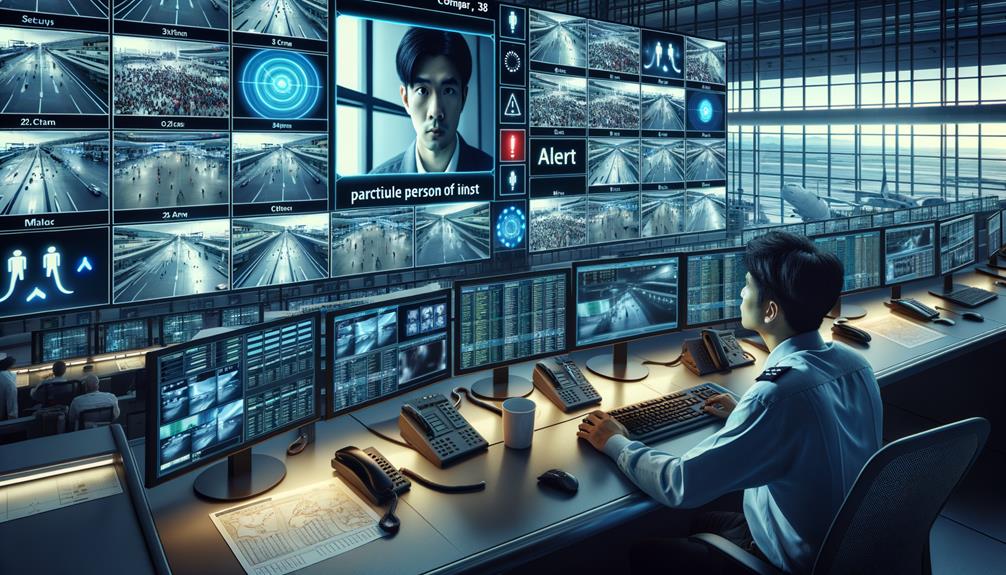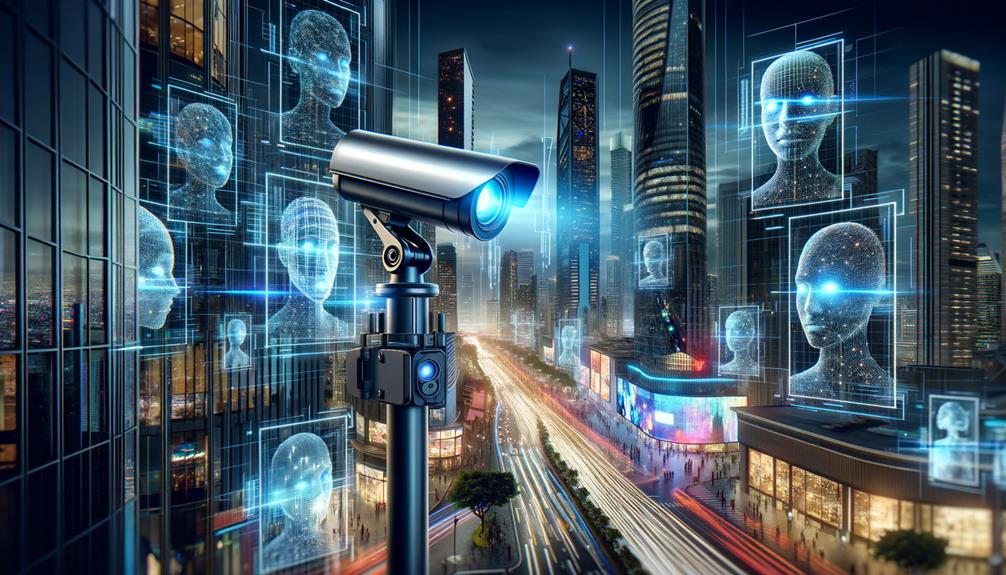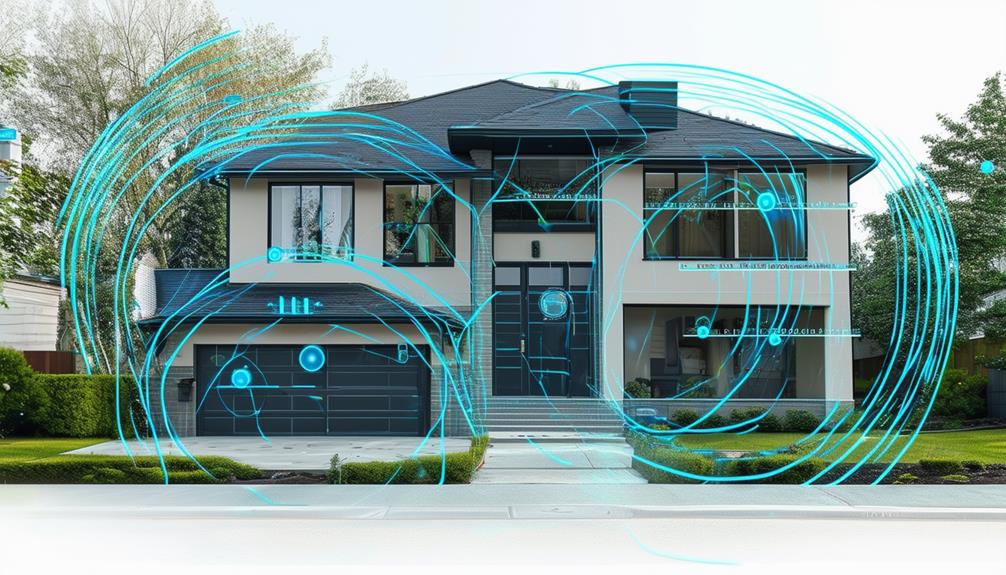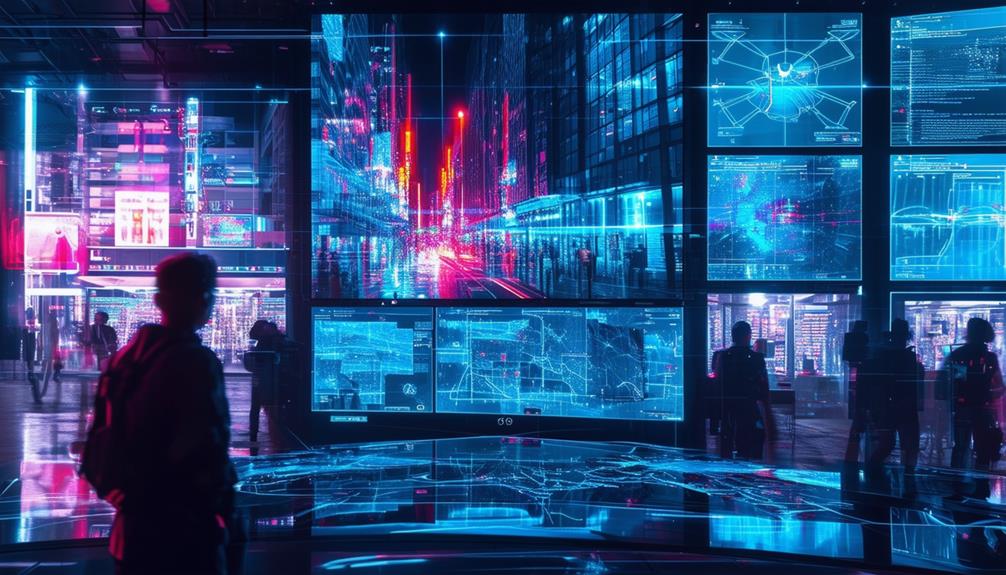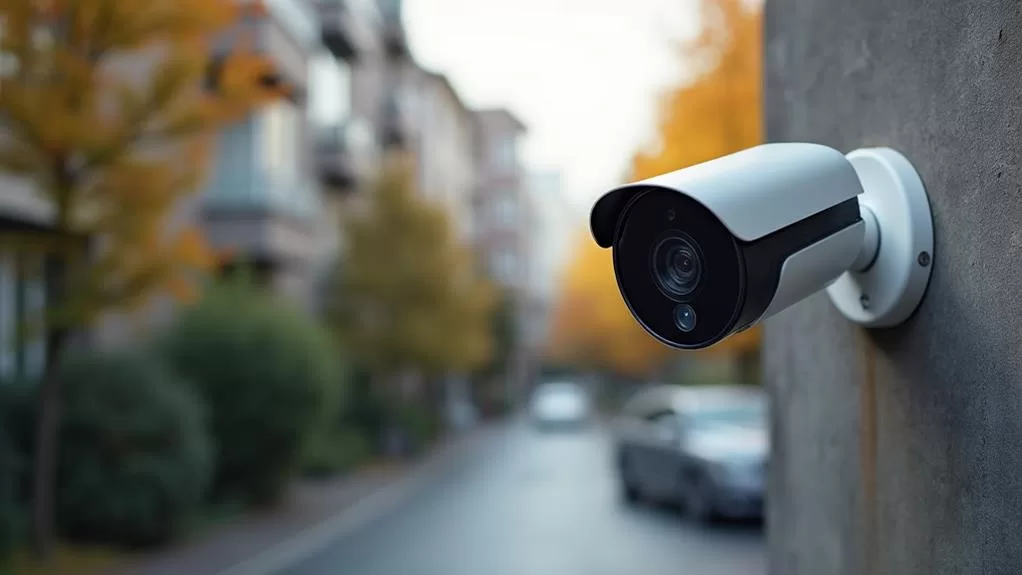Real-time facial recognition technology plays a vital role in enhancing surveillance capabilities. By continuously scanning live footage and instantly alerting personnel upon recognizing individuals matching watch lists or databases, it empowers security teams to promptly respond to threats. This advanced technology guarantees quick and efficient identification, greatly enhancing security measures while reducing response times in critical situations. If you're interested to learn more about the intricacies and potential of this technology, let's dive deeper.
Key Takeaways
- Real-time facial recognition surveillance empowers swift responses and timely notifications for enhanced security.
- The technology continuously scans live footage, converting facial features into digital data for quick comparison.
- It facilitates rapid detection and flagging of individuals with a match, expediting response times in critical situations.
- Facial recognition technology helps in enhancing security by swiftly identifying suspects, eliminating the need for passwords, and reducing unauthorized access.
- Real-time facial recognition supports situational awareness, providing alerts to potential threats and enabling immediate responses to unauthorized individuals or potential security threats.
Real-Time Identification Practices
Real-time facial recognition in surveillance critical environments ensures that identified individuals are promptly notified for swift reaction. This technology empowers security teams to respond quickly and efficiently, thanks to instant identification through live video feeds.
A sophisticated facial recognition software process captures and analyzes each face in real-time, comparing it against watchlists and databases to identify persons of interest or suspects. If a match is found, instant alerts are sent to security personnel, enabling them to take immediate action.
This proactive approach reduces response times in critical situations, ensuring excellent security and control.
Surveillance Technology Enablers
Advanced surveillance technologies like facial recognition systems have become pivotal in enhancing security and public safety through instantaneous monitoring and identification. As the primary enablers of modern surveillance, these systems empower law enforcement and security agencies to detect and track individuals in real-time with precision.
Here are four key ways surveillance technology enablers like facial recognition systems support public safety:
- Real-time Monitoring: Facial recognition systems can continuously scan live footage to identify individuals against databases of known persons.
- Biometric Analysis: These systems convert facial features into digital data for quick comparison with existing databases.
- Instant Identification: Real-time facial recognition enables swift detection and flagging of individuals with a match in the system.
- Tracking Capabilities: Enhanced tracking abilities facilitate rapid responses to potential security threats.
Biometric Advantages and Risks
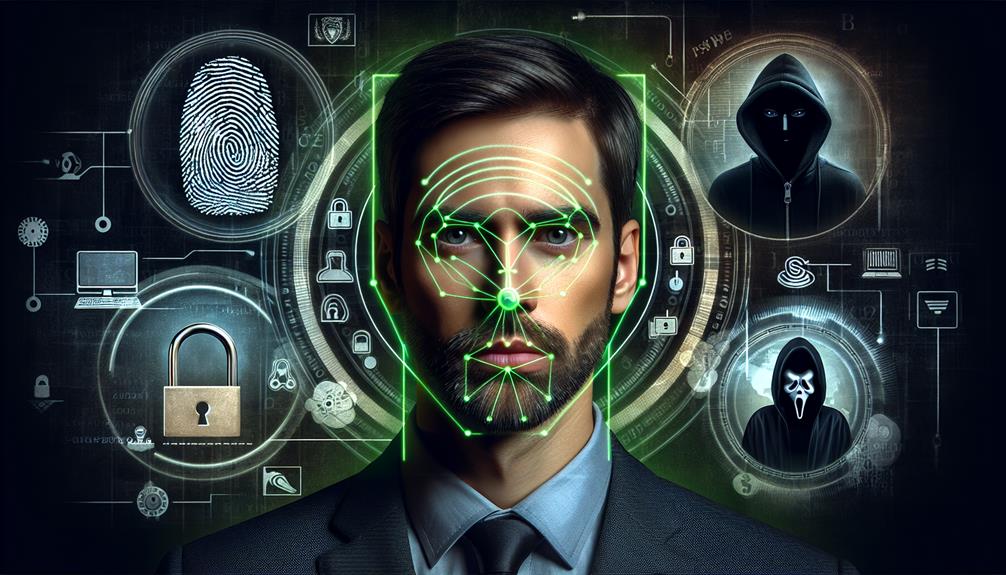
As I explore the world of real-time facial recognition in surveillance, it's important to analyze the biometric advantages and risks that come with this technology.
While facial recognition can greatly enhance security measures by swiftly identifying suspects and issuing timely alerts, there are also potential risks to privacy, data misuse, and the need for stringent regulations to prevent abuse.
Facial Recognition Risks
Does the integration of facial recognition technology into surveillance systems ultimately compromise individual privacy and security despite its biometric advantages? The key risks associated with facial recognition must be considered. Here are four essential concerns:
- Privacy Concerns: Mass surveillance through facial recognition raises significant issues regarding personal data and privacy. Without effective regulations, individuals may be subject to unwarranted monitoring and profiling.
- Data Breaches: Facial recognition data, if not properly secured, can be vulnerable to theft, leading to identity theft and other malicious uses.
- Misuse, Bias, and Discrimination: Facial recognition technology can be misused for malicious purposes, and biases in the algorithms may lead to inaccurate identifications or unfair targeting of specific demographic groups.
- Threat to Civil Liberties: Overreliance on this technology could compromise fundamental rights and freedoms, such as the right to privacy and assembly.
Given these risks, it's essential to weigh the benefits of facial recognition against the potential costs to individual privacy and security.
Enhanced Biometric Security
Real-time facial identification greatly enhances biometric security by leveraging the unique characteristics of an individual's face to guarantee prompt and precise identification in various settings. I can affirm that facial identification technology offers numerous biometric advantages that improve security measures.
For example, the convenience it provides is unparalleled. With facial identification integrated into devices or applications, users no longer need to remember intricate passwords. Additionally, facial identification expedites identification processes, allowing for seamless access control and efficient monitoring. This technology can also be utilized in law enforcement, customs, and border security, reducing the risk of unauthorized access.
However, it's important to acknowledge that enhanced biometric security comes with potential risks. Privacy concerns arise as facial data is stored and accessible to authorized parties. Additionally, security vulnerabilities can be exploited if databases are breached. Moreover, facial identification technology can display algorithmic biases, particularly against women and people of color.
Therefore, it's vital to address these risks to guarantee the responsible use of facial identification technology in surveillance and other applications.
Future of Surveillance
Enhancing surveillance capabilities, I recognize that real-time facial recognition technology will shape the future of monitoring and identifying individuals in public spaces, but its implementation hinges upon addressing privacy concerns, potential misuse, and ethical considerations.
With real-time facial recognition integrated into surveillance systems, law enforcement and security agencies can respond more effectively to emergencies, track potential threats efficiently, and enhance overall public safety.
Here are four key aspects of this technology's impact on surveillance:
- Seamless Identification: Real-time facial recognition enables swift identification in crowded areas, ensuring timely responses to threats.
- Efficient Monitoring: Integration into existing surveillance infrastructure makes it easier to track and identify individuals across various public spaces.
- Privacy Balancing: To mitigate privacy concerns, ethical considerations must guide the deployment of facial recognition to protect individual rights.
- Future Evolution: Continued advancements will further enhance real-time facial recognition, making it an essential tool for law enforcement and public safety initiatives.
Addressing these factors will drive the future of surveillance, where real-time facial recognition plays a crucial role in enhancing security while maintaining ethical standards.
Privacy as a Security Concern
'Privacy as a Security Concern'
In the extensive and ever-expanding domain of surveillance technology, the integration of real-time facial recognition is significantly heightening privacy concerns due to the potential for constant monitoring without consent. As this technology blurs the lines between privacy and public safety, questions arise about how effectively data security measures protect the personal information of individuals.
Surveillance methods like real-time facial recognition raise red flags among privacy advocates, who worry about the misuse of this technology for tracking individuals in public spaces. The accuracy and speed of these systems amplify privacy risks by enabling immediate identification and tracking. Additionally, the continuous surveillance made possible by real-time facial recognition heightens concerns about data security and the potential for breaches.
In light of these issues, it's essential to establish robust privacy regulations and ethical considerations that address the privacy implications of real-time facial recognition in surveillance.
Image Analysis for Recognition
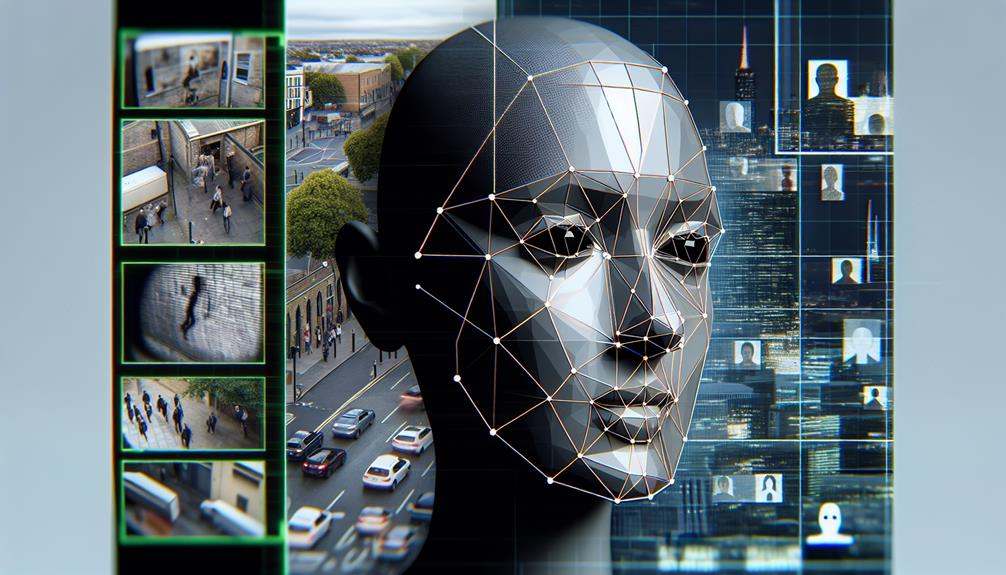
Facial recognition image analysis occurs in milliseconds, leveraging advanced algorithms that swiftly detect and extract facial features from live video feeds to facilitate instant identification of individuals in crowded environments. This technology is the backbone of real-time facial recognition in surveillance, empowering surveillance systems to track and monitor individuals in real-time.
Key Capabilities
- Instant Identification: Real-time facial recognition matches faces against watch lists instantaneously, ensuring quick and precise identification.
- Advanced Surveillance: Advanced image analysis capabilities track individuals in dynamic environments.
- Live Video Feed Analysis: Facial features are extracted from live video feeds to identify individuals rapidly.
- Crowded Environment Detection: Algorithms process facial data swiftly to identify individuals in crowded areas.
Real-time facial recognition systems have become a cornerstone in modern surveillance. These systems not only provide accurate identification in real-time but also enhance security and safety measures significantly.
Situational Awareness in Security
Real-time facial recognition technology plays a pivotal role in security operations by alerting me to potential threats and enabling swift responses to incidents. One of its most notable benefits lies in enhancing situational awareness. By instantly identifying individuals, this technology allows me to stay vigilant and proactive in addressing security concerns.
In crowded environments, where traditional security methods may be strained, real-time facial recognition excels at singling out persons of interest from the sea of faces. This precision remarkably improves my situational awareness, as I can immediately respond to unauthorized individuals or potential threats.
Access Control Applications (Access Control)
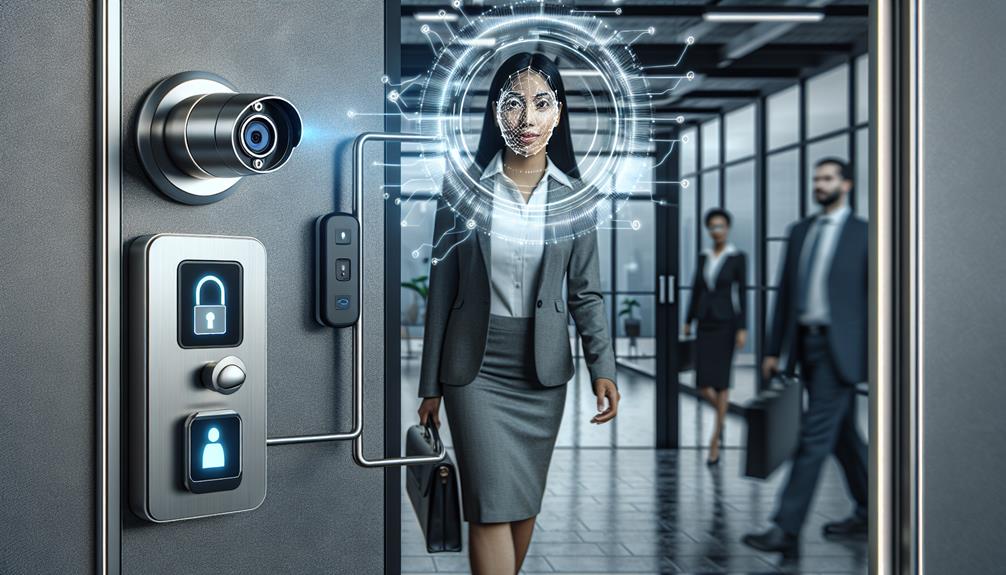
Instantly comparing live facial images with stored data, advanced facial recognition technology ensures accurate and efficient monitoring of authorized personnel in high-security environments. As an integral part of surveillance systems, real-time facial recognition plays a crucial role in ensuring the safety and security of various facilities, from corporate buildings to government institutions.
Here are four key advantages of incorporating facial recognition technology into access control systems:
- Efficient Authentication: Real-time facial recognition technology quickly verifies identities, granting or denying access to authorized personnel.
- Enhanced Surveillance: Facial recognition systems analyze facial features in real-time, preventing unauthorized entry and reducing the risk of breaches.
- Seamless Entry: These systems provide quick, hands-free access control, ensuring a smooth experience for authorized individuals.
- Increased Security: By comparing live facial images with stored data, real-time facial recognition significantly boosts security measures in access control applications.
Cloud-Based Enhancements
In integrating cloud-based enhancements into real-time facial recognition systems, I emphasize the importance of secure authentication protocols, enhanced facial matching algorithms, and efficient data management.
These advancements enable seamless integration with existing surveillance infrastructure and assure rapid response to emerging threats.
Secure Authentication Protocols
Enhanced cloud-based facial recognition systems for authentication protocols guarantee secure access to data and systems by leveraging cloud storage and processing capabilities to enhance facial recognition accuracy and speed.
Here are the key features:
- Real-Time Surveillance: Cloud-based enhancements allow for real-time facial recognition, ensuring immediate authentication and access control.
- Scalability and Flexibility: Cloud storage and processing power improve the system's ability to handle large-scale surveillance operations.
- Integration and Interoperability: Cloud-based facial recognition integrates seamlessly across multiple devices and locations, creating a unified surveillance ecosystem.
- High Accuracy and Speed: Cloud-based systems process facial recognition data faster and more accurately, reducing errors and enhancing security.
These cloud-based enhancements in facial recognition technology provide secure authentication protocols, ensuring that surveillance systems are efficient and effective.
Enhanced Facial Matching
Cloud-based facial recognition systems empower law enforcement and surveillance agencies to swiftly identify individuals by leveraging vast databases and processing power to match faces in real-time. This technological advancement is unparalleled in enhancing the accuracy and speed of facial matching. By harnessing the power of cloud computing, facial recognition technology can handle enormous amounts of data and perform intricate algorithms at lightning speed, making real-time identification possible across various platforms and devices.
The benefits of cloud-based improvements are manifold. They facilitate instant access to extensive databases, enabling the seamless matching of faces in real-time. This streamlined process greatly improves surveillance operations, contributing to robust security measures in diverse sectors.
Furthermore, integrating facial recognition technology with cloud-based enhancements guarantees that law enforcement agencies can quickly identify and track individuals, even in the most dynamic and high-stress scenarios.
Efficient Data Management
As facial recognition technology continues to advance, the need for robust data management strategies in the cloud becomes increasingly crucial.
Efficient Data Analysis: Cloud-based enhancements in real-time facial recognition enable faster data processing and analysis. This guarantees that surveillance systems can quickly sift through large amounts of footage.
Improved Real-Time Surveillance: The integration of facial recognition technology with cloud computing allows for more efficient and effective real-time surveillance. This can help in identifying individuals accurately and in a timely manner.
Key Performance Indicators
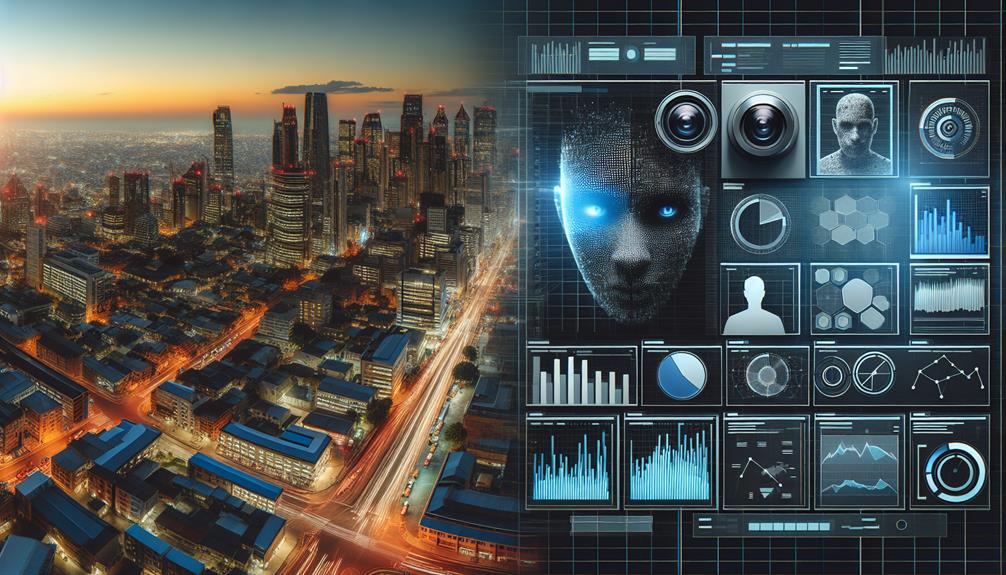
Real-time facial identification technologies consistently rely on specific key performance indicators that define their effectiveness in surveillance applications, including processing speed, recognition accuracy, and scalability.
In real-time surveillance, processing speed is vital, as it allows the system to handle a substantial volume of images quickly, often measured in frames per second (FPS). A higher FPS translates to higher accuracy and better performance. The accuracy of facial identification technology has improved notably, with some systems achieving over 99% recognition accuracy.
Scalability is crucial for real-time facial identification systems, as they need to efficiently match faces against large databases in milliseconds. This ability ensures smooth operation in various surveillance environments, such as busy public areas.
Moreover, advanced algorithms are continuously being developed to enhance these key performance indicators, improving the capability of these systems to detect and identify persons of interest within milliseconds. The precision of these technologies ensures that they can effectively provide real-time alerts for persons of interest and facilitate prompt action by security teams.
Frequently Asked Questions
How Does Facial Recognition Help With Security?
"I rely on facial recognition to enhance security by instantaneously detecting threats through real-time surveillance, minimizing potential risks with efficient monitoring and alert systems while balancing ethical implications and privacy concerns."
What Is the Difference Between Facial Recognition and Face Surveillance?
"The line between facial recognition and face surveillance blurs with the latter involving continuous tracking and monitoring. I worry about privacy concerns, ethical implications, accuracy rates, bias detection, facial data storage, and facial tracking, as surveillance technology grabs the spotlight."
What Are the Real Time Applications of Face Recognition System?
I utilize real-time face recognition applications in retail marketing for tailored experiences, access control for secure premises, attendance tracking, customer service personalization, and while balancing privacy concerns.
Why Is Facial Recognition Good for Law Enforcement?
As a law enforcement professional, I find facial recognition technology invaluable because it enhances crime prevention through rapid suspect identification, boosts public safety with real-time enhanced surveillance, and expedites investigations, leading to improved response times and better overall outcomes.

